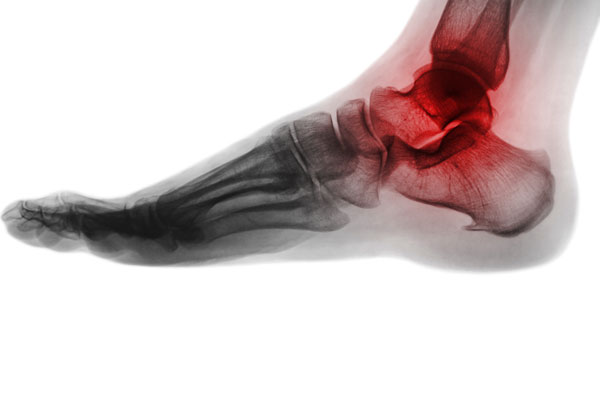Bone Fusion Surgery on Ankle
What is ankle fusion?
Ankle fusion, or ankle arthrodesis, is a surgical procedure done to fuse the bones of the ankle into one solid bone. The ankle joint is formed by the lower end of the shinbone (tibia) and the top of a bone of the foot known as the talus. This joint acts as a hinge and allows the foot to move up and down.

Why is ankle fusion performed?
The main purpose of ankle fusion surgery is to treat arthritis in the ankle, which does not get relieved with other non-surgical methods. There are three primary categories of ankle arthritis:
- Osteoarthritis that results from the wear and tear of the cartilage.
- Rheumatoid arthritis occurs when the immune system attacks one's own body cells.
- Arthritis due to a traumatic injury to the joint.
- Rarely, fractures of the ankle and foot are deemed irreparable.
This surgery is also recommended for patients with severe deformities or unstable ankles for various reasons.
If the above conditions lead to severe symptoms interfering with daily activities, then ankle fusion surgery may be recommended. Ankle fusion helps with long-lasting pain relief but limits the ankle's mobility.
What are the pre-procedure care for the surgery?
Preparing for the surgery helps the patient stay calm and in control during the surgery. The following preparation is necessary:
- Inform the doctor in advance about the medicines currently in use. This is because the doctor might ask the patient to stop taking certain medicines for a few days before and after the surgery.
- Do not eat or drink for a few hours before the operation.
- Avoid smoking for some days as suggested by the doctor to help with fast healing after the surgery.
- Arrange for transport to get back home after the surgery.
- Arrange for someone at home to help with daily activities after discharge, as it may not be possible to walk without support for some weeks after the surgery.
Before the surgery, the doctor may need imaging tests such as CT scans, X-rays, ultrasound, or a magnetic resonance imaging (MRI) scan.
How is ankle fusion surgery performed?
Ankle fusion surgery is performed by an orthopaedic surgeon assisted by a team of specialized healthcare professionals.
The patient is given spinal anesthesia or general anesthesia to prevent painful sensations during the operation.
An incision is made to cut open the skin and muscle of the ankle. Through this incision, a small camera with a light (known as an arthroscope) is inserted into the joint. The surgeon removes the damaged cartilage from the affected joint (this can also be done by a formal open procedure) and connects the bones together while aligning them in the proper position using the necessary hardware, usually an ankle fusion nail; there are other methods to achieve compression of the bony surfaces together. In cases where there is an infection prior, implant use is contraindicated, and an external fixator with POP may be used to achieve ankle fusion. The wound is finally stitched or stapled shut.
The vital signs, such as heart rate and blood pressure, are regularly monitored during the surgery.
What is the post-procedure care?
The patient may have to stay for 2 to 3 days in the hospital after the surgery. The time for recovery depends on the general health of the individual and the type of surgery.
Pain medicines are given to relieve the pain associated with the surgery. After the surgery, the operated leg is kept elevated to reduce swelling. Once the swelling reduces and the incisions heal, a plaster cast is applied from the knee to the toes. This helps in the proper fusion of the ankle, and the cast may be worn for 3 to 4 months. Do not put weight on the foot, as it can delay the healing.
Instructions would be provided to the patient regarding the use of crutches without putting weight on the foot and how to move the foot.
X-rays may be taken regularly to monitor the healing of the fused joint. Once the joint has fused, as confirmed by the x-rays, the cast is removed and a brace is applied to provide support during weight-bearing. The brace may be worn for a month.
What are the complications associated with the surgery?
Similar to other surgical procedures, ankle fusion is associated with certain risks. Sometimes one or more of the following complications can occur in patients:
- New arthritis in the nearby joints
- Bleeding and blood clots
- Swelling
- Stiffness
- Infection
- Nerve damage and numbness around the incision
- Improper joining of the bones
- Misalignment of the bones
The complications can vary for individuals depending on their overall health. For example, people with diabetes, low bone density, and habits such as smoking are at a higher risk of developing certain complications.